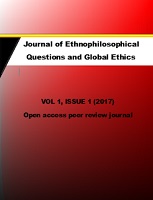Navayana – A Reformation of Buddhism
Navayana – A Reformation of Buddhism
Author(s): Timo SchmitzSubject(s): Comparative Studies of Religion, Cultural Anthropology / Ethnology
Published by: Timo Schmitz
Keywords: Ambedkar; Dalit movement; Navayana; Vajrayana;
Summary/Abstract: Some people call the Buddhist teaching by Ambedkar and the therein following Dalit movement as Navayana (see Hancock, 2004). However, the Dalit movement is just one part of Navayana and stands in opposition with the modern usage of the term. Thus, while Navayana was a term coined in India in the 1950s, it was recoined in the new millennia, and now the 1950s Navayana is actually just one direction within Navayana. Anyways, the conflict within the terms might be no surprise, since Navayana is still in developing and therefore, we are witnesses of a new reformed way of Buddhism that has many faces (cp. Schmitz, 2015). As such, Navayana is a way to adopt Buddhism to the 21st century and address the needs of global Buddhist adherents, who do not identify themselves within the three traditionally established doctrines. Buddhism is not a static, but fluid, religion. After Vajrayana developed at about 1,000 years ago and split off Mahayana, now we can see a new split in the Buddhist landscape of teachings. The reformation that is fueled by lay Buddhism is very necessary, as it shows the distrust in established bodies (Chung, 2003). Therefore, Navayana goes back to the independence of the Buddhist teaching outside of any strict additions, commentaries or societal backgrounds and leads a new era with many chances.
Journal: Journal of Ethnophilosophical Questions and Global Ethics
- Issue Year: 1/2017
- Issue No: 01
- Page Range: 29-31
- Page Count: 3
- Language: English

